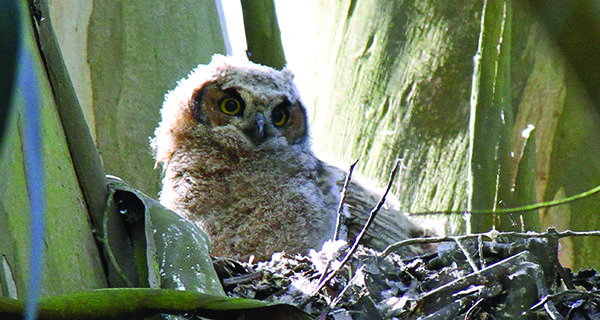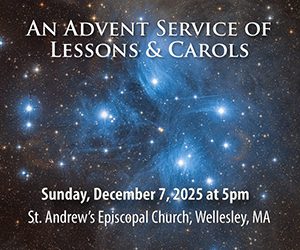[ccfic caption-text format="plaintext"]
By Lisa Moore
Hometown Weekly Correspondent
With winter’s icy grip still clutching the landscape, it is hard to imagine local birds nesting and laying eggs, events most people associate with spring.
Yet with spring still over a month away, some of the area’s birds are already well into breeding season.
A bird’s sole purpose for finding a mate is for procreation, and many male birds are sterile outside of their breeding seasons - thus, timing is everything. When bird pairs come together for successful mating varies between bird species and is timed up with factors such as temperature, food, and water availability, available nesting sites, and the length of the care period, which lasts weeks to months depending on the bird species. Birds have evolved so that their natural breeding seasons occur when nature provides everything they need to give resulting chicks the best chance for survival.
For larger birds and birds of prey like owls and hawks, the care period is long - so for them, mid-winter signals the start of the breeding season.
Red-tailed hawks, a commonly-observed bird in our area, begin mating in late February to early March, and will engage in elaborate mating rituals each year as the breeding season begins. Even bonded pairs, which mate for life, will engage in courtship, only choosing a new partner if their mate dies.
If you happen to observe two hawks flying in tandem, swooping, circling, and even clasping talons as they spiral to the ground before separating and soaring back up again, you may have witnessed a pair in courtship.
Actual mating, which lasts for only a few seconds, occurs when the male stands on the females’ back. While she parts her tail feathers to reveal her cloaca, he positions his to touch hers. This “cloacal kiss” is how sperm is transferred. The pair may mate several times a day during mating season.
Unpaired hawks and juveniles will also actively be seeking out a mate, with much circling and calling evident. Once the birds pair off, they will both contribute to the construction of a stick nest, often in large trees high above the ground, or other elevated structures with ledges, such as power-line poles and tall buildings. It takes about a week to finish nest construction, and the first eggs will be laid between mid-March and early April in clutches of 1-3 eggs on average, depending on food availability for the adults. Females will do most of the incubating, while males will bring the female food. When the female needs to hunt or stretch her wings, the male will incubate the eggs.
After 28-35 days of incubation, the eggs will hatch over 2-4 days’ time. Once hatched, the baby is totally dependent on its parents for food, warmth, and protection. Over the next 40 days or so, the young birds will eat, grow, and gain strength, leaving the nest for the first time approximately 42-46 days after hatching. The fledglings will stay near the nest in the early weeks, still getting food from their parents. As flying skills improve, hunting skills develop and the fledglings will start hunting for some of their food. At about four months of age, the juveniles will become independent of their parents, dispersing to populate other areas.
Another large raptor that soars through our neighborhoods, rarely seen as it moves under cover of night, is the great horned owl, one of the earliest breeders in North America. For these birds, courtship can begin between October and December. Monogamous, the male will attract his mate by puffing up his chest, rubbing feathers with her, and repeatedly bowing to her. If receptive, she will hoot; for extra convincing, the male may offer his intended some freshly caught prey which they would share.
For the great horned, there is no nest building. Instead, males hunt for a nesting site such as a hollow in a tree, old large bird nest, or other suitable secure location. Eggs are laid from late February to early April, depending on the food availability for the adults. Clutches range in size from 1-6, with two being typical, and incubation takes just over a month, averaging between 28-37 days. The female rarely leaves the nest during incubation while the male brings her food.
From two weeks to about two months, the young owls learn the basics of survival - like climbing, grasping, and defending themselves. By six to seven weeks, they start flying. By four months or so, they will leave their parents. The juveniles will float around near their birth territory until they establish their own and come into sexual maturity at age two.
So, why nest in the depths of winter when food is harder to find?
For a bird, it’s all about the advantages.
In the winter, there’s less competition from other birds for available resources, and less threat of predation on young. Additionally, when the young are getting ready to leave their own nests, there will be many animals coming out of hibernation, returning from migration, and having young of their own that will serve as food.
So go out in nature and look for the signs of these and other animals that stay around our parts all year long - even in the depths of a cold New England winter.
























